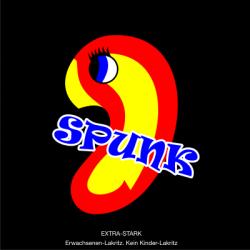
The South of Iceland is very rightfully one of the country’s more popular tourism destinations. The severely geothermally active region contains some of Iceland’s most stunning landscapes as well as multiple sites of interest and natural wonders like glaciers, geysers and waterfalls. It is also conveniently close to Reykjavík and its international airport, enabling even those who are only in Iceland for a short jaunt to partake in some of its wonder.
While one could be forgiven for focusing strictly on the nature at hand, acquainting oneself with the local culture and history is also a worthwhile pursuit, especially when it has stories as fascinating and graphic as the South of Iceland does.
The Icelandic Saga Centre in Hvolsvöllur is an excellent option for those wishing to learn about Iceland’s early settlers and some of its Sagas in a short amount of time. The centre’s main exhibit revolves around the most famous of Iceland’s Sagas, ‘Brennu-Njáls Saga’ (“Burnt Njal’s Saga”), which is an epic tale of lust, vengeance, murder, manipulation and blood feud, all set in the era when Iceland was first being settled by tax-evading Norwegians.
Send your friends swimming
The exhibit is a fairly standard historical exhibit, with the traditional set-up. It is an ambitiously crafted one, and has a lot of information pertaining not only to the famous Saga and all its murders, but also to Iceland’s early settlers’ way of life and worldview (as imagined by modern scholars). It is divided into five parts, and starts off by setting the stage with a display devoted to the ‘environment and zeitgeist’ of Njála times, with maps of the Viking worldview, scale models of the types of buildings early settlers constructed and inhabited as well as samples of their weaponry and clothing.
While one looks upon models of the broadswords, cloaks and helmets purportedly donned by Njáll and his friends, unseen speakers blare soundscapes of battle, of the ocean and other noises that one might have heard in early Iceland at that time (the aural backdrop changes as you move through the exhibit, too). The items and illustrations are accompanied by text in Icelandic, German and English (there are also audio tours available in those languages) that gives several details and information and is quite well crafted (here is some advice: if you are the type of person that likes to read such details and immerse yourself in such exhibitions, send your impatient friends swimming or something).
A Viking Dallas
After setting the stage, the display moves into Njála territory and details the epic saga and its characters, chapter through chapter. If you have never heard of Njála, you should definitely read up on the Saga, as it is a good one (if not the best one). With its betrayal, lust, murder and vengeance, it might even be called a Viking-age version of popular 1980s TV series Dallas.
After treading through all the plotlines and learning about the characters of Njála, we found we had gleamed much knowledge and were nicely satisfied with the visit. While the exhibit cannot replace reading the book itself (an English translation is widely available for free online), it gives a nice insight into the Iceland of yore and definitely brings to life the fascinating tale of Njáll and the trouble that surrounded him.
An exhibit you won’t understand
After wandering through the exhibit, we went on to observe a miniature replica of a parliamentary session at Þingvellir around Iceland’s time of settlement. We then were disappointed to learn no one was operating a restaurant in the building’s Viking style dining room, but that disappointment quickly faded as we found yet another exhibit to view and wander through.
Although it has yet to be translated to English, Kaupfélagssýningin (“The Co-Op Exhibit,” which is also housed in the centre), is a fun place to walk through and it has lots of interesting artefacts to examine (and if you have an Icelander with you, you can ask them to read you the signs. The Co-Ops were farmer founded and run cooperative companies that they used to trade their goods and where they purchased needful things and groceries (often the farmers would never see any money, they would deposit their wool or produce and credit any purchase to their account). Even though the Co-Op system is viewed less than positively in today’s retrospect, it is an important part of Iceland’s 20th century history.
The exhibit places focus on commerce and trade in the South of Iceland over the last hundred years, which of course involves the Co-Ops a lot. It’s key attraction for non-Icelandic speakers (there are apparently plans underway to translate) is that it has all sorts of fascinating old machines: computers, mimeographs, typewriters, weighing machines and everything else needed to run a Co-Op (there is even a replica of an old Co-Op office). And since you already paid to get in to the museum, you might as well use the opportunity, see some cool stuff and learn what the Njáls Saga characters’ boring descendants got up to over the last century.
The Icelandic Saga Centre is open every day from 09:00–18:00
Admittance is 750 ISK (free for under-16s)
www.njala.is
—
Read more about our travel:
OUR CAMPER IS EXPLODING WITH JOY
Buy subscriptions, t-shirts and more from our shop right here!















